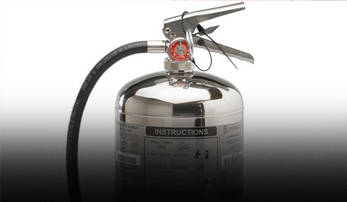Elevate Your Gameplay Strategic Crash Betting, Live Trends & the Power of an Aviator Predictor.
- Elevate Your Gameplay: Strategic Crash Betting, Live Trends & the Power of an Aviator Predictor.
- Understanding the Crash Game Mechanic
- The Role of Live Bets and Social Interaction
- Analyzing Betting Patterns
- The Importance of Bankroll Management
- Understanding Provably Fair Technology
- Using an Aviator Predictor: Risks and Considerations
- Strategies for Maximizing Your Chances
- Final Thoughts on Crash Game Betting
Elevate Your Gameplay: Strategic Crash Betting, Live Trends & the Power of an Aviator Predictor.
The world of online casino gaming has seen a surge in popularity with the advent of new and engaging game formats. Among these, the “crash” game has captured the attention of many, offering a unique blend of risk and reward. Understanding how to navigate this dynamic environment can be enhanced with tools like an aviator predictor, though it’s crucial to approach such resources with informed caution. The core appeal lies in its simplicity and immediacy—a growing multiplier that can ‘crash’ at any moment, requiring players to cash out before the inevitable loss. This guide delves into the strategies, features, and considerations surrounding this exciting form of online gambling.
Understanding the Crash Game Mechanic
At its heart, the crash game is remarkably straightforward. A multiplier starts at 1x and steadily increases over time. Players place a bet and, crucially, decide when to ‘cash out’ to secure their winnings. The longer you wait, the higher the multiplier, and therefore the greater the potential payout. However, the multiplier can “crash” at any moment, resulting in the loss of the entire bet. This element of unpredictability is what makes the game so thrilling, and attracts a broad base of players looking for fast-paced action. Success comes down to a calculated gamble, balancing the desire for a large win with the risk of losing everything. Skillful anticipation and careful management of funds are key principles for prolonged engagement with the game.
| 1.0x – 1.5x | Very Low | Small Profit |
| 1.5x – 2.0x | Low | Moderate Profit |
| 2.0x – 5.0x | Moderate | Significant Profit |
| 5.0x+ | High | Very High Profit (but also high risk of crashing) |
The Role of Live Bets and Social Interaction
Many modern crash games incorporate a “Live Bets” feature, adding a social dimension to the experience. This functionality displays the bets and winnings of other players in real-time. This can be both informative and psychologically impactful. Observing other players can provide insights into common strategies, or create a sense of FOMO (fear of missing out) leading to more reckless betting. The live feed can be used to get a general feeling for the current ‘mood’ of the game. A flurry of cash-outs at a certain multiplier might suggest a potential crash is imminent. This added layer of transparency enhances the game’s appeal, transforming it from a purely individual experience into a shared one. The ability to visualize other players’ strategies can be valuable, but remember that past performance is no guarantee of future results.
- Trend Following: Observe common cash-out points among other players.
- Risk Assessment: Gauge the overall risk appetite of the current gaming environment.
- Psychological Impact: Be aware of how other players’ bets might influence your own decisions.
Analyzing Betting Patterns
Observing betting patterns can offer valuable insights into the dynamics influencing the game. For instance, a sudden increase in bet sizes across the board could signal a shift in player confidence or a perceived opportunity. Analyzing the timings of cash-outs can also reveal potential trends. Do players typically cash out at specific multiplier ranges? Are there periods of prolonged waiting followed by a sudden rush of withdrawals? However, it’s essential to remember that these patterns are not predictive. The crash is fundamentally random, and past behavior doesn’t dictate future outcomes. Nevertheless, being observant and considering these factors can help you develop a more analytical approach.
The Importance of Bankroll Management
Effective bankroll management is paramount in any form of gambling, and the crash game is no exception. The high-risk, high-reward nature of the game demands a disciplined approach. Set a predefined budget for your sessions and stick to it rigorously. Avoid chasing losses by increasing your bet sizes in an attempt to recoup previous losses. Consider using a fixed percentage betting strategy, where you risk only a small percentage of your bankroll on each bet. This can help mitigate the impact of losing streaks. Furthermore, establish clear profit-taking goals. When you reach a certain profit level, withdraw your winnings and enjoy your success rather than risking it all in pursuit of even greater gains.
Understanding Provably Fair Technology
One of the key features distinguishing reputable crash games is the implementation of “Provably Fair” technology. This ensures the randomness and fairness of each game round through cryptographic verification. This essentially means that players can independently verify the integrity of the results, providing reassurance that the game is not rigged. The core principle involves using a server seed (created by the game provider) and a client seed (generated by the player). These seeds are combined to generate a random number which determines the outcome of the round. The transparency afforded by Provably Fair systems fosters trust and helps ensure a fair gaming environment.
- Server Seed: Generated by the game provider.
- Client Seed: Generated by the player.
- Hash Algorithm: Combines the seeds to produce a random result.
- Verification: Players can verify the randomness using publicly available tools.
Using an Aviator Predictor: Risks and Considerations
The allure of an aviator predictor is understandable; the prospect of anticipating crashes and maximizing profits is enticing. However, it’s crucial to approach these tools with a healthy dose of skepticism. Most purported predictors rely on historical data and algorithmic analysis, attempting to identify patterns that may or may not exist. The fundamental truth is that the crash game is inherently random, making accurate prediction extremely difficult, if not impossible. Furthermore, many ‘predictors’ are simply scams designed to prey on unsuspecting players. Those that do offer some form of analysis often come with significant limitations and should not be relied upon as a guaranteed path to success. Integrate this understanding when evaluating the usefulness of such tools.
Strategies for Maximizing Your Chances
While predicting the exact crash point is impossible, employing strategic approaches can significantly improve your odds of success. One common strategy is the ‘Martingale system’, which involves doubling your bet after each loss. However, this is extremely risky and requires a substantial bankroll, as losing streaks can quickly escalate. A more conservative approach is to set a target multiplier and cash out consistently when that level is reached. Another strategy is to ‘scalp’ – consistently cashing out at low multipliers (e.g., 1.1x – 1.5x) to generate small but frequent profits. The best strategy will depend on your risk tolerance, bankroll size, and personal preference. Remember that no strategy guarantees success and that responsible gambling is paramount.
Final Thoughts on Crash Game Betting
The crash game provides a fast-paced and exciting gaming experience, offering the potential for substantial rewards. However, it’s crucial to approach it with a clear understanding of its inherent risks and the importance of responsible gambling. While tools like an aviator predictor might offer a semblance of control, it’s essential to remember that the game is ultimately based on chance. Disciplined bankroll management, a strategic approach, and a healthy dose of skepticism are your best allies in navigating this dynamic world. The key to long-term enjoyment lies in balancing risk and reward, and knowing when to walk away.









Recent Comments